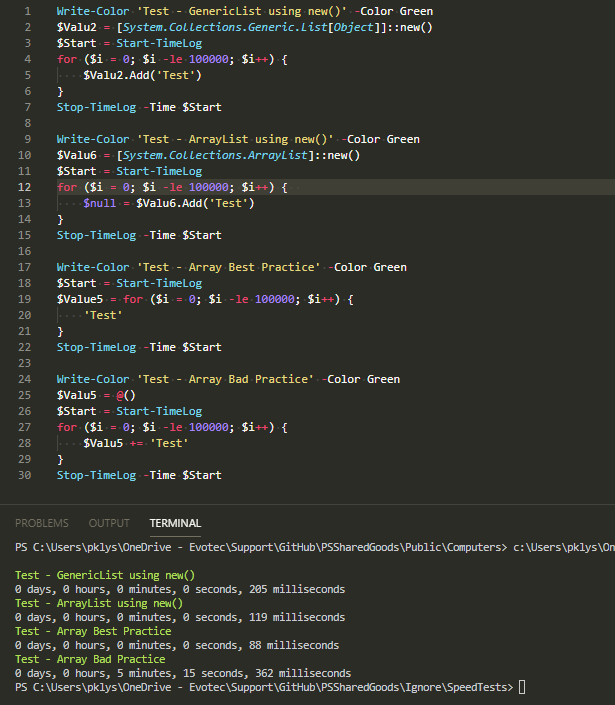
+ CategoryInfo : InvalidOperation: (op_Subtraction:String), RuntimeException Method invocation failed because ] does not contain a method named ‘op_Subtraction’. Now, I’ll try to remove the “c” from the array. I’ll create an array called $letters and save a few letters in the array. You can change objects in the array, but you can’t add or delete them, because that would change the size of the array.
POWERSHELL ARRAY VS ARRAYLIST WINDOWS
Removing objects from arrays should be simple, but the default collection type in Windows PowerShell, an object array (System.Object), has a fixed size. But that answer was incomplete, and while there are many good posts on the topic, none really cover the whole scope of pitfalls. When I first answered this question in about_Arrays, I didn’t really know much about the subject and I used the (very good) answer that the team gave me. It’s one of those beginner questions that has an advanced answer. It’s a simple question, but the answer isn’t very simple at all.
POWERSHELL ARRAY VS ARRAYLIST HOW TO
But attempting to use the ArrayList instead of a generic array rather than $results = leads to a strange object that I can't access the properties of (with Select-Object -ExpandProperty or subexpressions).A member of the PowerShell group on Facebook asked how to delete an object from an array. I can then work with and organize the data by using a subexpression to expand the PSCustomObject which was saved into a variable. Each result is then output as a property of a PSCustomObject, which is the final result of each runspace. My general use for this is to multithread a number of Get-CimInstance commands over CimSessions to pull information on remote computers. Add() method to work with Arraylists, I've been able to do that without much difficulty on the runspaces collection, but attempting to do this on the results collection tends to return a generic (and I hope I'm remembering this correctly) PS Automation Object that I can't expand or read the properties of rather than the "normal" PSCustomObject that I was attempting to output. Yeah, but in Chrissy's implementation she does use "+=" to add the runspace to the runspaces collection and to start it, as well as to use "+=" to add the results to a results collection with EndInvoke. I'm sure there might be a faster way but a minute is good enough for now. So, I used a generic list ( to be precise) instead of an array and it finishes the entire process in about a minute. I didn't realize that $Array+=$customobj was so expensive (it copied the array on every assignment I guess when you do this). I was using an array to catch the changes before exporting it to a new CSV. They have a ton of these CSV files to process so obviously 12 hours is, uh, not acceptable. My original script took over 12 hours to run (prod dataset had over 700k rows). I didn't think much of it and then today I was asked to optimize it.

I was given a sample with only 100 rows and turned a powershell script around in short order.

I work with a lot of large datasets which can get complicated at times but I got a simple request to manipulate the contents of a CSV file. Thought I'd share a little back to the group.

Submission Guidelines | Link Flair - How To


 0 kommentar(er)
0 kommentar(er)
